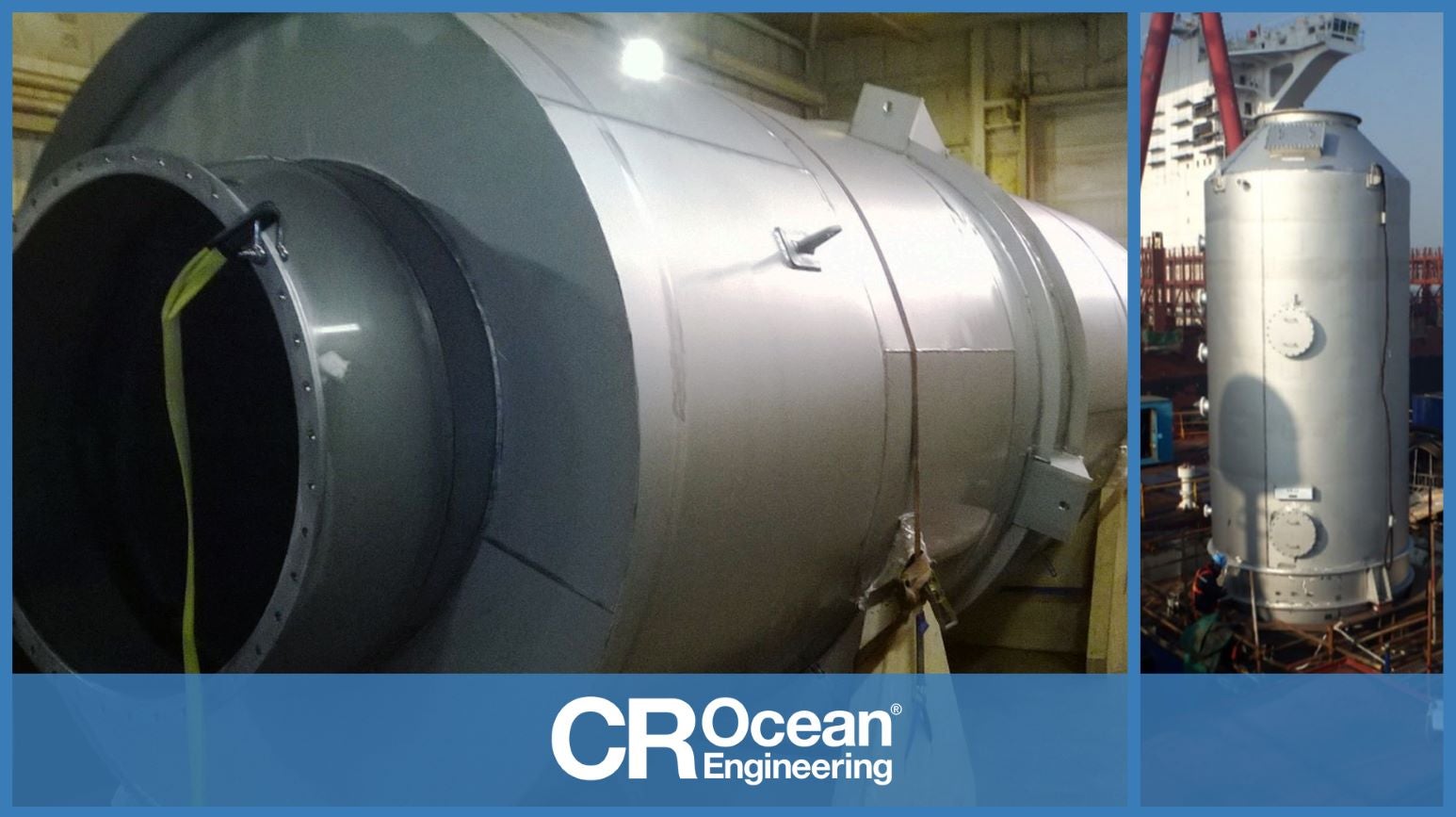
When scrubbing solutions were introduced as a MARPOL-approved means to control deadly Sulphur emissions, shippers had two choices: either pay a premium for the more expensive VLSFO or pay hefty violation fines.
All that changed with the introduction and increased acceptance of maritime scrubber systems, which clean diesel emissions in a cost-effective way, allowing shippers to burn high-sulfur diesel and still comply with MARPOL emissions reduction requirements.
This resulted in higher profits, more flexibility, and cleaner air than just using low-sulfur fuels. In many cases, a one-year ROI is not uncommon.
CR Ocean Engineering (CROE) is one of the world’s leading manufacturers of this powerful and increasingly attractive technology. Cleaning deadly emissions has been our core mission for over a century.
As one of the world’s leading manufacturers of marine scrubbers, the main lesson we have learned from the strict MARPOL emissions requirements is that a scrubber on board (built with the ship or retrofitted) increases the shippers’ choices, giving them the choice to use the more established higher sulfur bunker fuels. Additional benefits to using exhaust gas cleaning technology are that dangerous particulates are reduced and exhaust gas is prepared for future decarbonisation technologies.
CR Ocean Engineering scrubbers are available in three standard configurations, customisable to a ship’s requirements:
- Open-Loop (hybrid ready): once-through scrubber using sea-water
- Closed-Loop: a recirculating scrubber using sea-water (or freshwater) with caustic
- Hybrid: a combination of both designs for maximum flexibility.
CROE Scrubbers normally replace the silencers. They are small, have a compact configuration and a flexible design, and are one of the most reliable in the industry. They can be installed in the funnel or outside.
Some of the features of the CROE Scrubbing Systems include:
- Option of bottom entry I-Type, side entry L-Type, or our U-Type entry designs to better fit any funnel configuration and simplify engine exhaust gas duct, with or without a bypass. The CROE system can also be installed outside the funnel, if that is preferred, to maximise pre-assembly and expedite the installation.
- Strategically configured exhaust gas inlet and scrubber drainage to eliminate any potential water back-flow to the engine.
- Eliminated circulation water storage from the bottom of the scrubber vessel to reduce weight at higher elevations, improving stability.
- Alloy construction (external and internal) to extend the life of the system and allow the exhaust gas to travel through the scrubber system at high temperatures in case of dry-run conditions, without a bypass.
- Uses proprietary internals designed specifically to increase contact area, with lower liquid flows to save on typical pumping costs associated with some scrubber designs.
- Optional proprietary Caustic-Assist feature for Open-Loop assist operating in low-alkalinity areas.
Over the many installations in operation, the CROE design has proven very reliable and effective for all clients.
Until recently, the primary focus for our sales team was the 0.1%S and the 0.5%S regulations on fuel sulfur content (as issued by IMO, effective January 2015 and January 2020, respectively). The CROE research team has been busy developing new technologies for fine particulate reduction (PM<2.5µ), black carbon reduction, and CO2 capture and sequestration.
While a handful of ports have implemented restrictions on the use of Open-Loop Scrubbers, most independent studies show that this discharge is not harmful to the sea nor to sea life. To avoid conflicts on this issue, CROE partnered with an advanced filtration system supplier to provide an easily-integrated, high efficiency wash-water filtration system to remove the sludge in a non-hazardous dry form, and to streamline the process of discharging the much cleaner water filtrate back into the body of water.
Furthermore, the use of scrubbing systems has a much smaller carbon footprint than using low-sulfur fuels, such as VLSFO and MGO. Using low-sulfur fuels will increase the ship’s environmental impact for CO2 and the very dangerous PM<2.5. A CROE scrubbing system will instead have lower CO2 (well to wake), lower particulate emissions (total of PM10 and PM2.5), lower Black Carbon and, in most cases, can also have lower sulfur emissions compared to low sulfur fuels.
To sum up, scrubber technology is truly beneficial for our planet. It controls deadly emissions, it expands options, it protects shippers’ revenue streams, and can increase profits in the short (one year ROI) run.
For more information, please follow the links on our profile.

